Light doesn’t just help us see, it’s also about making us experience the world around us, as we do during the day, and making us feel something other than light.
Nowadays architectural lighting at night has gradually become a part of architectural language, which plays an important role in expressing architectural culture.
For Building With Different Functions, Architectural Lighting Design Should be Different
The architectural lighting at night should be consistent with the architectural culture, expressing the functional characteristics of the building, that is, the mapping of the building functions. So for building with different functions, architectural lighting design should be different.
1. Commercial Building
Facade lighting of the commercial building should reflect the building’s prosperous atmosphere, while the overall harmony of the luminance level, light-shade relationship, light color, and lighting approach should be taken into account.
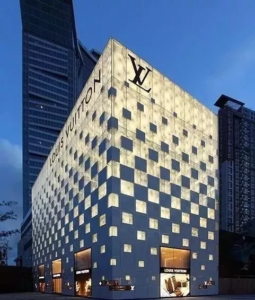
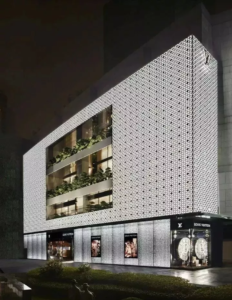
▲ Above is exterior architectural lighting(facade lighting) for famous LV. Through a very strong light visual impact, people from a long distance can feel its existence.

▲ Through flood light, linear light and other lighting ways, the city’s leisure, fashion, elegance are reflected one by one, while allowing consumers to obtain a unique, personalized shopping experience.
2. Science and Education Building & Office Building
As for teaching buildings, libraries, in the performance of lighting, we should focus on the expression of an elegant, quiet cultural atmosphere. While office buildings, hotels, restaurants, and memorial buildings should show a bright, solemn, concise atmosphere.
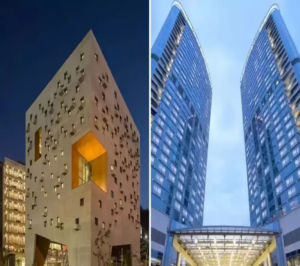
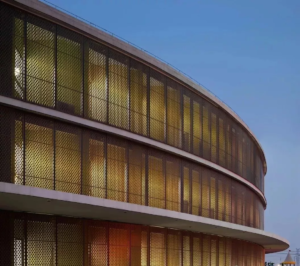
And RGB lighting should not be used in large areas for these two types of public buildings. Most areas should be illuminated by white, or mainly by white light, while small areas can be illuminated by RGB colorful light so that the color appears more harmonious, natural.
3. Residential Buildings
Residential lighting should highlight the flavor of life, it is appropriate to use a warm yellow tone, rendering intimacy and the breath of life.
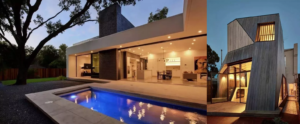
▲ A touch of warm light will create a unique artistic atmosphere for the home.
Light Enhances Characteristics of Architectural Culture
Facade lighting can further express the architectural culture on the level of spiritual function, such as can highlight religious nature. In the aesthetic level, we can increase the charm of architecture by showing the details, expressing the essence and highlighting the cultural characteristics of architecture.
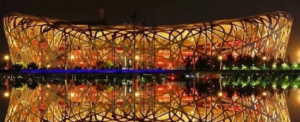
▲ The Beijing National Stadium Bird’s Nest, which emphasizes the Chinese red architectural elements through good night landscape lighting, highlights the Chinese characteristics of the building by using the interior lighting (means silhouette), which should reflect the cultural deposits of the building.
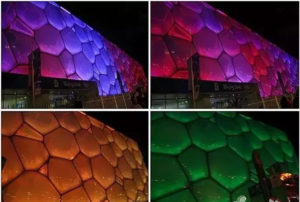
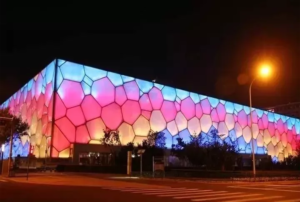
▲ Famous Water Cube, designers make full use of light refraction and reflection principle, and let light and shadow changes on its exterior facade, it makes the water cube that people see at night is unpredictable, the lighting effect is really amazing.
The Method of Facade Lighting to Express Architectural Culture
Night facade lighting is to use the rich expression of light to reshape the image of the building at night, but how to use light to correctly express the architectural culture?
1. Color
Color has the characteristics of guidance, symbolism, and emotion. It is one of the important means of night facade lighting to express architectural culture. It plays a key role in shaping the architectural image and atmosphere and enhancing architectural attraction.
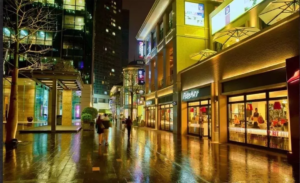
▲ The building in this picture, the light color mainly chooses the warm light, simultaneously appropriately uses the different light colors as well as the light color combination, thus better reshapes the building’s new image different from the daytime. In this way, it brings the brand-new emotion experience for the human and enhances the charm and beauty of architecture itself.
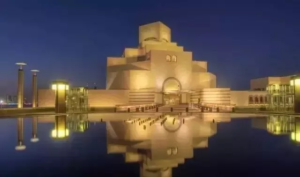
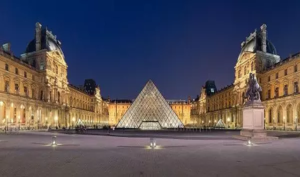
▲ Both buildings in these two images can be called classical works, they are of the Tiled Kiosk and the Louvre in France. Through the combination of regional and national culture carrier, designer choose warm white light at night to express the building. Now architecture and the surrounding environment are integrated, at the same time, the surrounding environment is rejuvenated with new vitality.
2. Control the direction of Illumination
By controlling the angle and direction of light, such as using bottom-up lighting approach, the visual effect will be different from that of the day, breaking the pattern of light and shadow produced by natural light, and emphasizing the detailed features of the building that doesn’t have during the day.
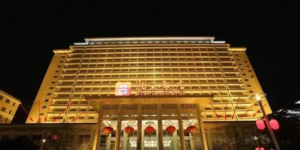
▲ The famous Beijing Hotel uses a bottom-up lighting approach. Light is projected onto the walls of the building’s main body, which brings the obvious atmosphere of solemnity and majesty at night.
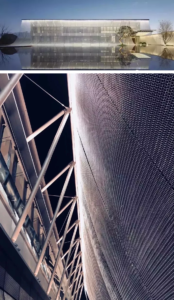
▲ Lighting fixture can also be installed in the upper position, downy wash the building structure, let people feel the beautiful lines of free drapes, as well as looming scene construction.
3. Control illumination and brightness
Controlling the illuminance and brightness of night facade lighting can shape the change of light and shade, and make people have different psychological feelings through more intense light and shade contrast.
Generally speaking, An area has a prominent bright place that belongs to the central location, and it has a lively atmosphere. While another place has a prominent shadow, and it should have a sense of calm, cold. From brightness to darkness leads one into a dream, from darkness to brightness one awakes as if from a dream. Sudden darkness makes people afraid, while sudden brightness makes people excited and so on.
4. Combination of different lighting methods
The combination of different lighting methods, such as floodlighting, inner translucency, outline lighting or special lighting, can form different one-dimensional, two-dimensional or three-dimensional lighting effects, and increase the level sense of the space.

▲ The famous Tian ‘anmen Square adopts various lighting ways such as outline lighting, flood lighting and so on, while it is designed with the idea of the plane layout of the Chinese classical architecture, that is, the clear sense of axis, primary and secondary, symmetry and sculpture-style courtyard layout. These design idea eventually revealed its majestic classical beauty at night.
5. Determine the viewing angle
In the design of night facade lighting, after the main viewing angle is determined, then the primary and secondary elevation to be lighted will be confirmed. We should be clear the lighting design of the primary and secondary elevation can be different. Also viewing effect at different distances, as well as at different heights of the building itself can be taken into account. Thus, the night image of the building is more abundant
6. Do not destroy the original texture of the building
The night facade lighting of the building should not to affect the shape of the building itself, which can be achieved through good lighting design, such as hiding the lighting fixture while achieving the lighting effect.
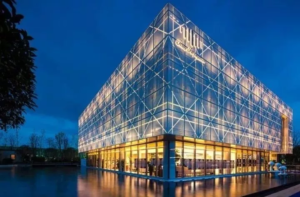
▲ In this building, light passes through the perforated aluminum panels from the inside out, without additional decoration. This lighting method respects the building structure itself while makes the building more exciting at night.
The above facade lighting methods can be mixed used, which means some change on the basis of overall harmony is necessary. It makes the lighting effect of the building have a sense of hierarchy and richness, also it is a better way to highlight the characteristics of architectural culture.
AALD
Archillumi, a One-stop Facade Lighting Solutions Brand.